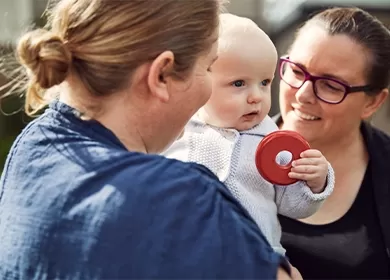Don’t have an account?
Select the donation type you’d like to make
What makes O negative blood the universal blood type
Every blood type is vital, but only O negative can be safely given to all recipients. In an emergency, it can be life-saving.
In the 19th century, long after ‘doctors’ realised milk and wine were not appropriate substitutes for blood (medicine has come a long way), physicians still couldn’t figure out why some patients recovered after receiving a blood transfusion and others didn’t. This puzzle led to the discovery of blood types and the tiny molecules that make them possible: antigens.
Antigens can be found on the surface of red blood cells and determine which blood type we have. These antigens appear in different combinations to create the 8 key blood types, plus a range of lesser-known blood groups. They’re also key to understanding why O negative blood is so special and why some blood types just shouldn’t mix.
Antigens aren’t just found in our blood, they can be found in all kinds of organisms and substances like viruses, bacteria, or toxins. If these substances enter our system, our body identifies the foreign antigens as a threat and triggers an immune response. Part of this immune response includes the release of specialised molecules known as antibodies, which have been trained to hunt down foreign antigens, bind to them and neutralize the threat. If you’ve ever had a cold or infection your body would have used antibodies to help fight it off.
Now you might be wondering, if antibodies protect us from disease, aren’t they a good thing? And the answer is yes, all antibodies want to do is protect you. The problem is, they can be overprotective.
If a recipient receives a transfusion with a different blood type, their immune system doesn’t care if these new red blood cells are there to help. All it sees is a wave of foreign cells invading the body and it mounts an attack. In response, antibodies are released and seek out the red blood cells, binding to their antigens. This can cause clotting, kidney failure and even death.
Thanks to innovations in medical technology cases like this are extremely rare. Today, identifying a person’s blood type is as easy as a simple needle prick, but in an emergency, every second counts and that’s where O negative can save the day.
Sometimes it’s what you’re missing that matters most
Unlike the other key blood types, O negative is missing all highly reactive antigens – that’s why it’s called ‘O negative’. The letter ‘O’ indicates an absence of A and B antigens, while ‘negative’ indicates the absence of the Rh factor (RhD). Without these, there’s nothing to alert the recipient’s immune system. When O negative blood is transfused into a recipient, it can slip in undetected, and do all the good things blood does without triggering an immune response. That’s why O negative blood is the universal blood type, it can be used for any recipient regardless of blood type, with little risk of harm.
So, what are you waiting for? you could be hiding O negative superpowers! The only way to find out is to book a donation.
Have you ever wondered how long a blood donation can be stored? Or perhaps you just want to learn more about all the other blood types? Whatever you’re searching for, we’ve got the answers at The School of Lifeblood.




